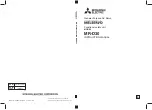
Design and function
MIG/MAG welding
099-005613-EW501
23.04.2019
23
5.3.2 Welding torch connection
Equipment damage due to improperly connected coolant pipes!
If the coolant pipes are not properly connected or a gas-cooled welding torch is used, the coolant
circuit is interrupted and equipment damage can occur.
• Connect all coolant pipes correctly!
• Completely unroll the hose package and the torch hose package!
• Observe maximal hose package length > see 5.1.2.2 chapter.
• When using a gas-cooled welding torch, use a hose bridge to establish the coolant
cuit > see 9 chapter.
The Euro torch connector is factory-fitted with a guide tube for welding torches with steel liner. Conversi-
on is necessary if a welding torch with a steel liner is used!
• Operate welding torches with a liner > with a guide tube!
• Operate welding torches with a steel liner > with a capillary tube!
Depending on the wire electrode diameter or type, either a steel liner or liner with the correct inner
diameter must be inserted in the torch!
Recommendation:
• Use a steel liner when welding hard, unalloyed wire electrodes (steel).
• Use a chrome nickel liner when welding hard, high-alloy wire electrodes (CrNi).
• Use a plastic or teflon liner when welding or brazing soft wire electrodes, high-alloy wire electrodes or
aluminium materials.
Preparation for connecting welding torches with a spiral guide:
• Check that the capillary tube is correctly positioned in relation to the central connector!
Figure 5-9
















































